Clay Competitors Analysis 2025: How the Top Data Enrichment Platforms Compare
How Clay stacks up against major data enrichment competitors in features, pricing, and usability
Blogby JanApril 23, 2025

Having access to accurate, comprehensive contact and company information will make or break your outreach campaigns. Clay has emerged as a notable player in the data enrichment space, but understanding how it stacks up against Clay competitors is crucial for making an informed decision about which platform best suits your specific needs.
This competitive analysis goes beyond simple feature listings to examine the fundamental differences in business models, target markets, and value propositions among the leading data enrichment platforms in 2025. Whether you're considering Clay or evaluating alternatives, this guide will help you understand the competitive landscape and identify which solution aligns best with your organization's requirements.
The Data Enrichment Competitive Landscape in 2025
The data enrichment market in 2025 has evolved significantly, with platforms differentiating themselves through specialized capabilities, business models, and target customers. To understand how Clay competitors position themselves, we need to examine the distinct market segments that have emerged:
Multi-Source Aggregators vs. Proprietary Database Providers
The market has split into two primary approaches to data sourcing:
Multi-Source Aggregators like Clay and Databar.ai focus on connecting to numerous third-party data providers through a single interface. This approach particularly benefits teams implementing simplified data enrichment strategies that require broad data coverage without vendor lock-in. These platforms typically use a credit-based system where users pay for specific data points pulled from various sources. The advantage is access to a wider range of data sources through a unified platform, though quality can vary between providers.
Proprietary Database Providers like ZoomInfo and Apollo maintain their own massive databases of contact and company information. These platforms typically charge subscription fees for access to their proprietary data. While having extensive databases, they may have less comprehensive coverage in specific niches or regions.
No-Code Workflow Builders vs. Integrated Sales Solutions
Another key differentiator among Clay competitors is their approach to functionality:
No-Code Workflow Builders like Clay focus on providing flexible tools for building custom data enrichment workflows without coding. These platforms appeal to teams that need highly specific, customizable data processes that can be modified as needs evolve.
Integrated Sales Solutions like Apollo.io combine data enrichment with outreach capabilities and campaign management. These all-in-one platforms appeal to teams looking for end-to-end solutions rather than specialized tools for each function.
Enterprise vs. SMB Focus
The market also segments based on target customer size:
Enterprise-Focused Platforms like ZoomInfo offer comprehensive solutions with robust compliance features, account management, and custom integrations, but at premium price points often starting at five figures annually.
SMB-Focused Solutions like Databar.ai provide more accessible pricing tiers and user-friendly interfaces designed for smaller teams without specialized technical resources. This approach serves organizations building comprehensive prospecting workflows without enterprise-level complexity.
Clay positions itself primarily as a multi-source aggregator with no-code workflow capabilities. For teams seeking different implementation approaches, exploring Clay alternatives reveals platforms with varying workflow philosophies and technical requirements. This positioning shapes both its strengths and limitations when compared to its competitors.
How Clay's Business Model Shapes Its Competitive Position
Clay's business approach significantly influences how it compares to Clay competitors. Understanding this model helps explain where it excels and where alternatives might offer advantages.

The Clay Approach
At its core, Clay operates as a no-code data enrichment platform connecting to multiple third-party data providers. Its business model centers around several key elements:
Credit-Based Pricing: Users purchase credit allocations that are consumed when performing specific data operations. Different enrichment tasks require varying credit amounts, with more complex operations consuming more credits.
Table-Based Workflow: Clay organizes data in tables similar to spreadsheets, allowing users to create connections between these tables to form research and enrichment workflows.
AI Research Assistant: Claygent, Clay's AI research tool, represents a significant investment in automating complex research tasks beyond simple data enrichment.
Middleman Position: Rather than owning data sources, Clay serves as an intermediary connecting users to various providers through a unified interface.
Competitive Strengths from this Model
This approach gives Clay distinct advantages in certain areas:
Workflow Flexibility: The table-based system allows for highly customizable data processes that can be tailored to specific use cases.
Multi-Source Access: By connecting to numerous providers, Clay can offer broader data coverage than single-source platforms.
Research Automation: Claygent provides capabilities beyond basic contact lookup, allowing automated extraction of information from websites and other sources.
Competitive Vulnerabilities
However, this same model creates challenges when competing against certain alternatives:
Learning Curve: The flexibility of Clay's table system comes with complexity that can require significant time investment to master.
Variable Credit Consumption: The credit-based model can make costs unpredictable until usage patterns are established.
Middleman Markup: As an intermediary between users and data providers, Clay necessarily adds a markup to the underlying data costs.
Limited Native Outreach: Unlike integrated platforms like Apollo.io, Clay focuses primarily on data enrichment rather than offering built-in outreach capabilities.
Understanding these fundamental aspects of Clay's approach helps explain the specific competitive dynamics when comparing it directly to alternatives.
Head-to-Head Comparisons: Clay vs. Key Competitors
When evaluating Clay against its major competitors, it's helpful to compare them directly across key categories that matter most to potential users. Here's how Clay stacks up against four of its primary competitors in 2025:
Clay vs. Databar.ai
Data Coverage:
- Both platforms provide 80+ keyless integrations with popular tools
User Experience:
- Clay features a powerful but complex table-based interface with a steeper learning curve
- Databar.ai emphasizes intuitive design and faster time-to-value, requiring minimal technical expertise to get started
Platform Features:
- Clay limits key functionality to higher-tier plans (CRM integrations only on $800/mo Pro plan, Webhooks and Custom HTTP APIs only on $349/mo Explorer plan)
- Databar.ai provides Custom HTTP APIs on all plans and CRM integrations on the more accessible $129/mo Scale plan
- Databar.ai offers visualization capabilities with charts and maps not available in Clay
- Both platforms provide AI web agent capabilities and intent signal tracking (hiring, job changes)
Integration Capabilities:
- Databar.ai offers 1-click custom integrations not available in Clay
- Databar.ai includes API access across all plans, while Clay restricts this functionality
- Databar.ai provides white glove onboarding experiences missing from Clay's offering
For teams prioritizing ease of use, cost efficiency, and accessible advanced features, Databar.ai provides superior value across multiple comparison points.
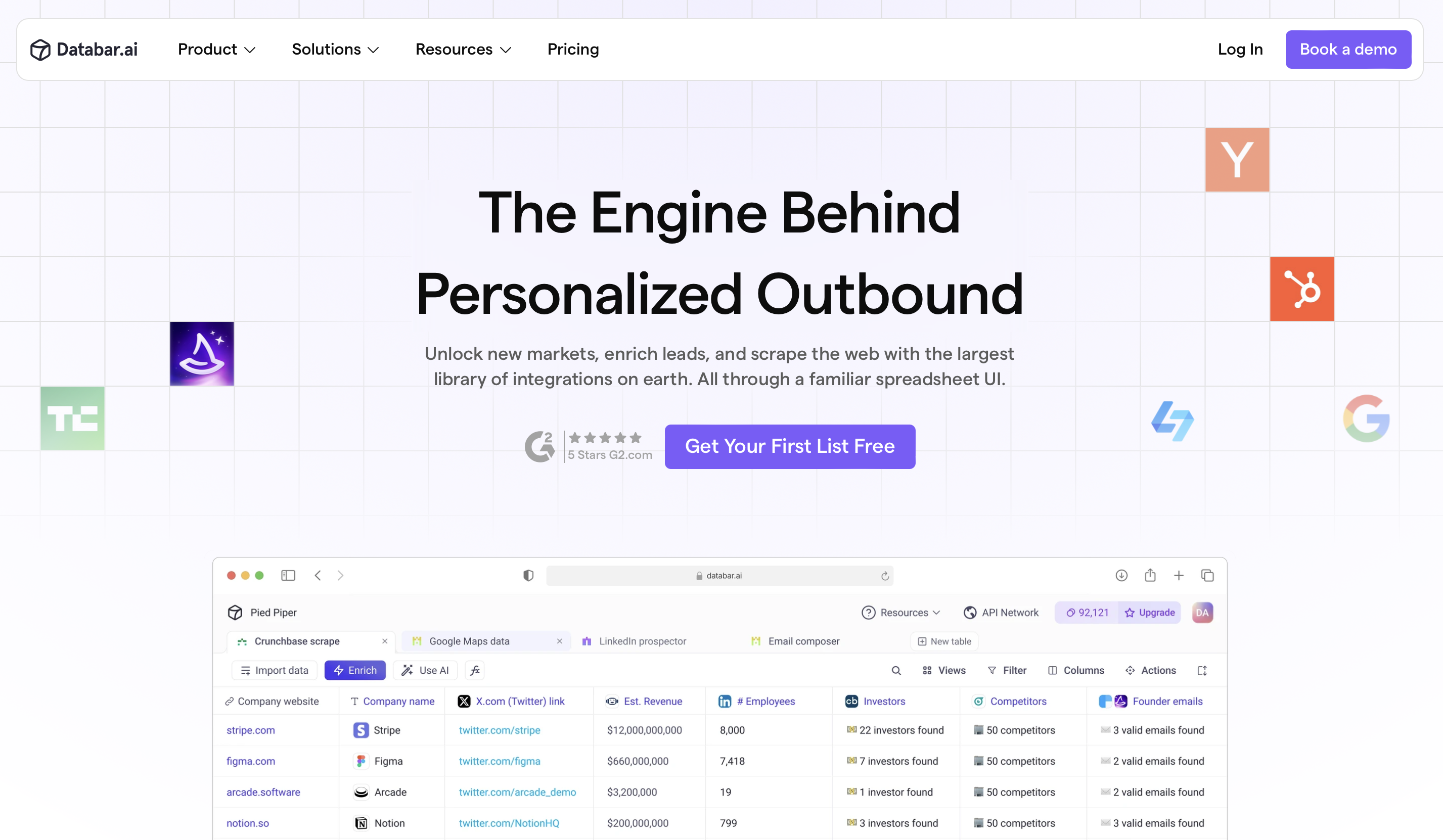
Start your free Databar.ai trial today
Clay vs. Persana
Core Focus:
- Persana is an AI-powered tool specifically for lead research and enrichment
AI Capabilities:
- Clay's Claygent provides AI research functionality thorough Claygent
- Persana offers AI agents to create comprehensive contact profiles
Teams focused on personalized outreach will find Persana's specialized approach valuable for generating actionable insights about prospects.
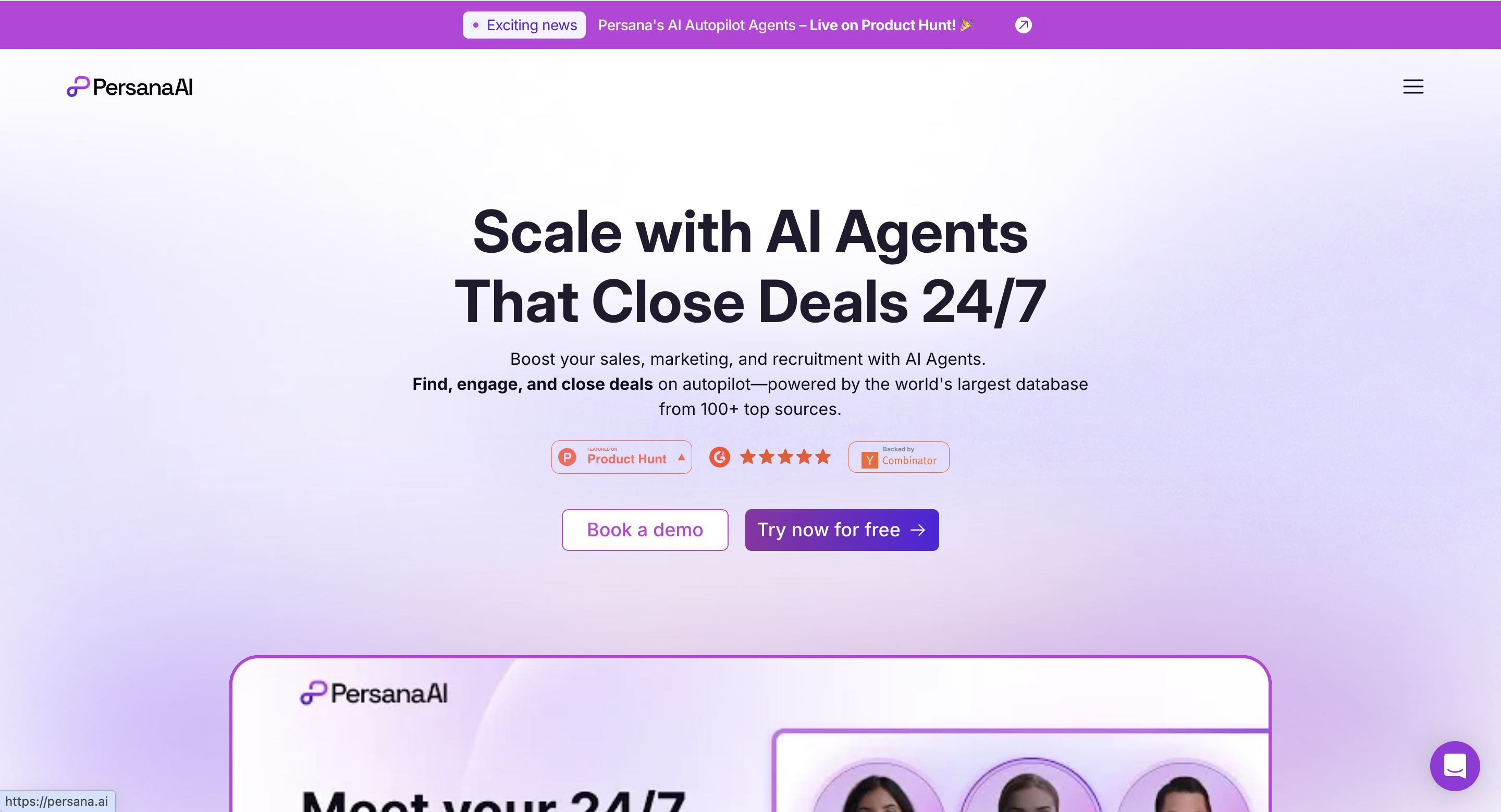
Clay vs. FullEnrich
Core Focus:
- FullEnrich is built specifically for contact and company enrichment at scale
- FullEnrich allows you to plug into existing outbound workflows to auto-fill missing details and prep leads
Implementation:
- Clay requires a more complex setup of tables and workflows
- FullEnrich offers plug-and-play enrichment with minimal configuration
Organizations primarily looking to fill gaps in contact data within existing systems will find FullEnrich's specialized approach more efficient.
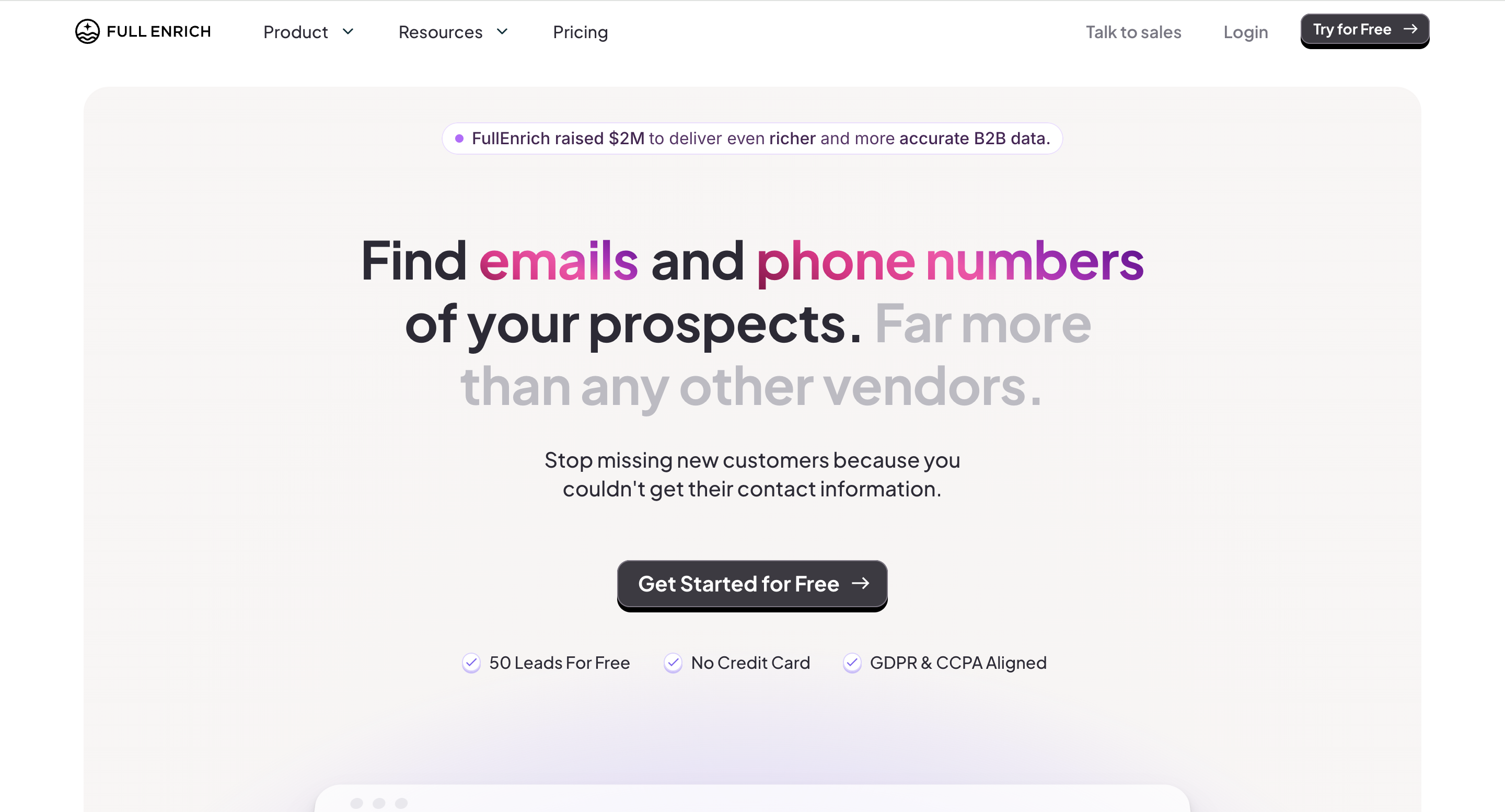
Clay vs. Rows
Interface:
- Rows operates within a familiar spreadsheet environment that connects to APIs, automates enrichment, and visualizes data
Visualization:
- Rows offers robust charting and data visualization features directly within the spreadsheet interface
For teams that want data enrichment capabilities but prefer to work in a familiar spreadsheet environment, Rows provides an solid alternative.
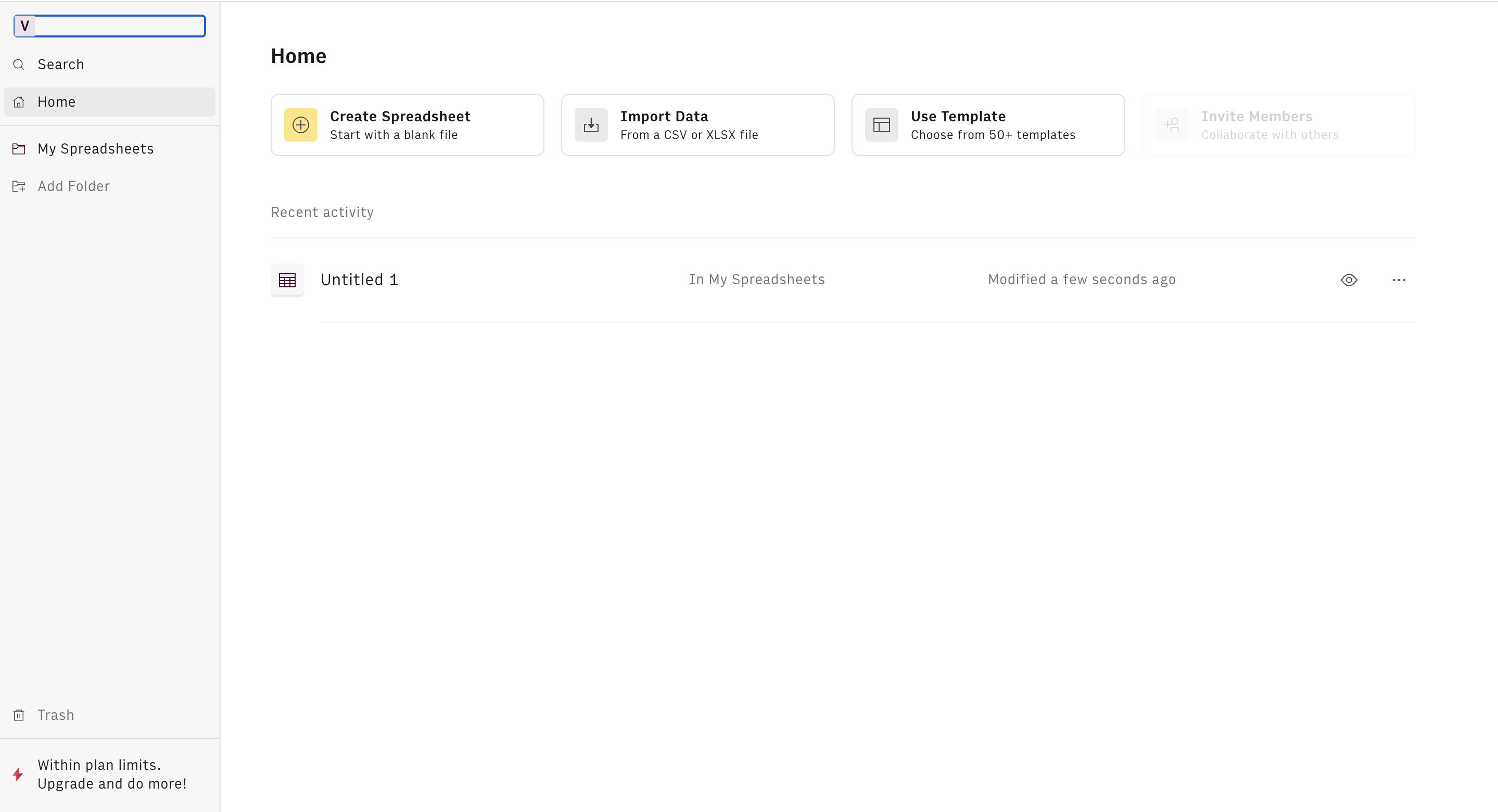
Clay vs. Baseloop
Core Focus:
- Baseloop is an AI-powered automation tool that extracts insights, enriches data, and builds outreach-ready contact lists
LinkedIn Capability:
- Baseloop specializes in LinkedIn prospecting with purpose-built features for this use case
Sales teams heavily focused on LinkedIn prospecting and needing advanced AI capabilities may find Baseloop's approach interesting.
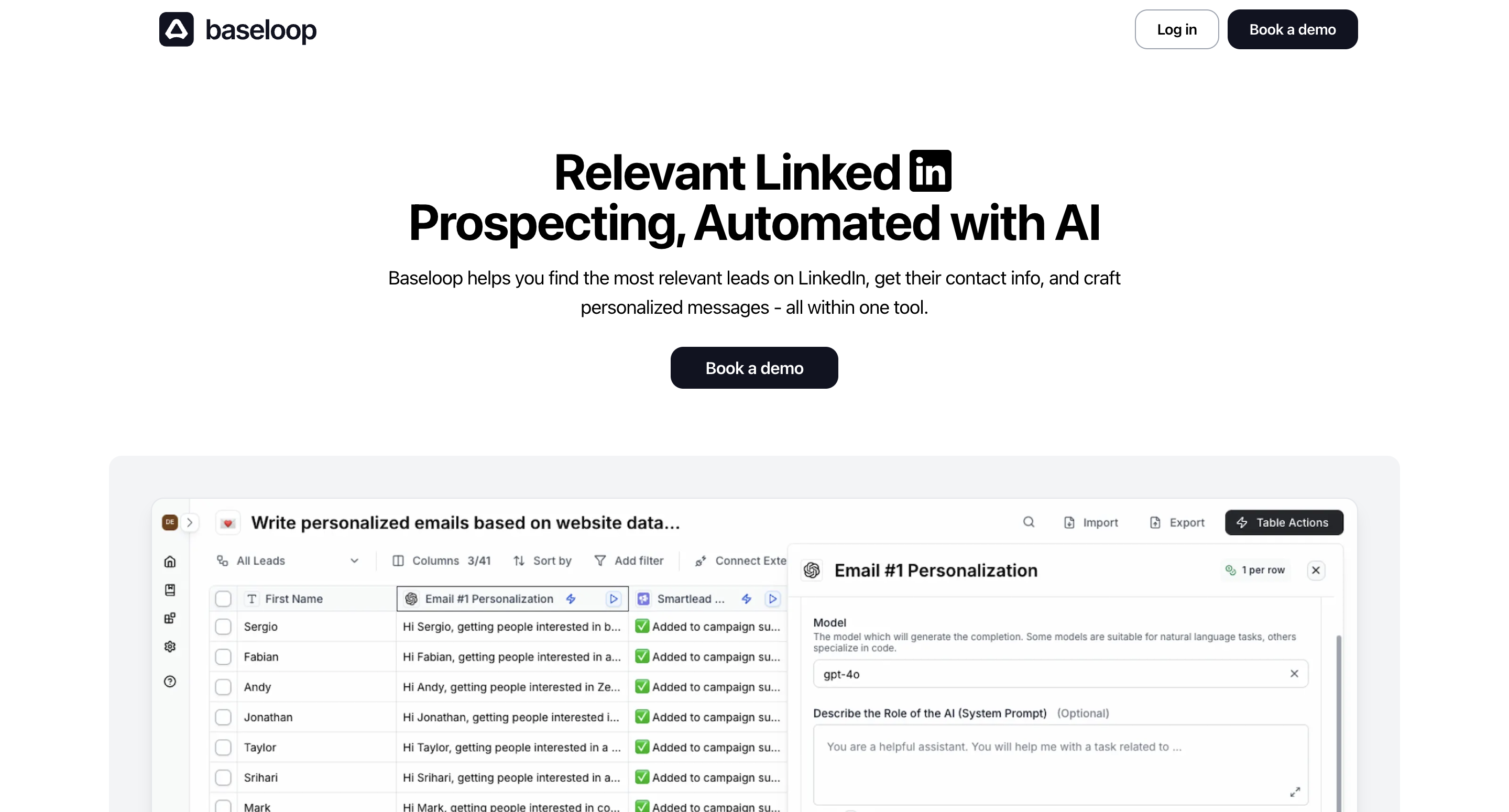
Clay vs. Phantombuster
Core Focus:
- Phantombuster specializes in scraping, enriching, and automating actions from web platforms like LinkedIn
- Phantombuster can replicate some Clay workflows, especially for prospecting
Technical Requirements:
- Phantombuster uses a simpler "configure and run" model with pre-built automation templates
For teams primarily focused on social platform data extraction and automation, Phantombuster provides a more specialized solution for LinkedIn-centric prospecting workflows.
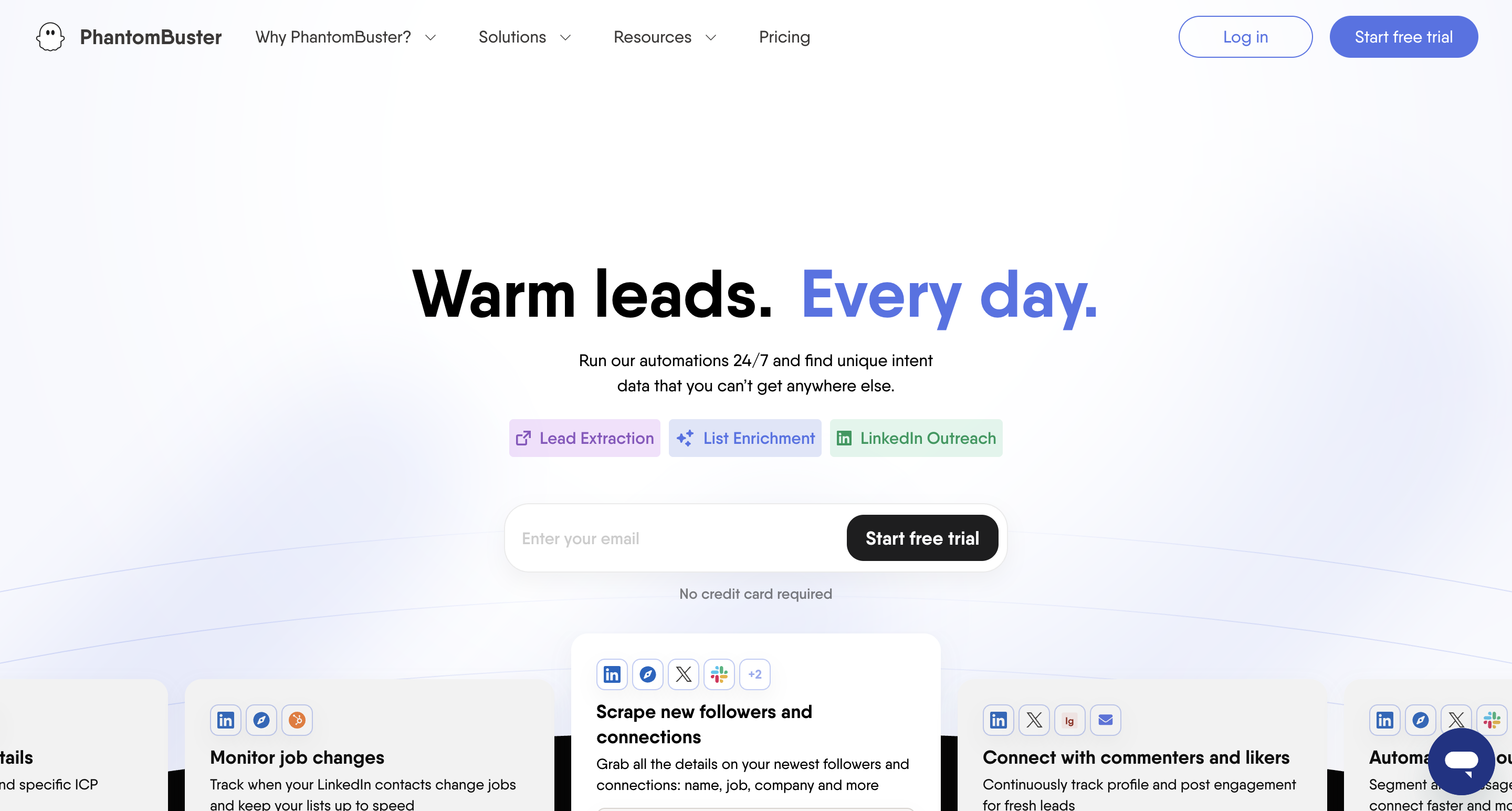
Choosing Between Clay and Competitors: Decision Framework
When evaluating data enrichment platforms, focus on these five key factors to determine which solution best fits your specific needs. For comprehensive platform analysis beyond competitive positioning, our detailed Clay review examines implementation requirements and real-world performance:
Identify Your Primary Use Case
Your core objectives should drive platform selection. For building targeted prospect lists, table-based workflows offer flexibility while integrated solutions provide seamless outreach capabilities. When enriching existing databases, multi-source aggregators deliver breadth while proprietary databases often offer consistency. Research automation requirements are best served by intuitive interfaces for non-technical teams or highly customizable systems for specialized workflows. Sales teams should consider whether they need standalone enrichment or integrated engagement tools based on their existing stack.
Assess Technical Resources
Teams with technical expertise can leverage complex platforms offering extensive customization, while those without dedicated technical staff should prioritize intuitive interfaces with guided workflows. This consideration becomes particularly important when evaluating CRM enrichment solutions that need to integrate seamlessly with existing sales processes. The learning curve varies between platforms, with some requiring weeks of training and others enabling productivity within hours. Consider both initial implementation requirements and ongoing maintenance needs when evaluating technical fit.
Consider Budget Constraints
Enterprise organizations ($100K+/year) can access comprehensive solutions with advanced features and dedicated support. Mid-market teams ($10K-$100K) typically find the best value in platforms that balance capability and cost without premium pricing. Small businesses (under $10K) should focus on solutions with transparent pricing that avoid unexpected costs while providing essential functionality and clear upgrade paths.
Evaluate Data Coverage
Different platforms excel in different data categories. Assess match rates for contact information in your specific target industries, depth of company information for firmographic needs, and technology detection capabilities if tech stack data matters to your use case. Global operations require platforms with strong international data coverage, which varies significantly between providers. The accuracy and freshness of data should be prioritized over raw database size.
Prioritize Integration Needs
Your existing tech stack should influence platform selection. Evaluate the depth of CRM integrations, compatibility with marketing automation tools, and API flexibility for custom applications. Consider whether you need bidirectional syncing, real-time enrichment capabilities, or batch processing based on your workflows. The ease of data transfer between systems can significantly impact team efficiency and adoption.
By systematically evaluating these factors according to your specific requirements, you can identify which data enrichment platform will deliver the most value for your organization's unique situation.
How Databar.ai Positions Within the Data Enrichment Ecosystem
In case you're wondering how we fit within the broader data enrichment landscape discussed throughout this analysis, here's how our approach addresses common platform selection challenges:
- Our approach alongside Apollo.io - Intuitive enrichment interface complementing integrated platform capabilities
- Databar.ai within the enterprise data space - Transparent enrichment pricing alongside enterprise implementation options
- How we serve agencies - Simple multi-workspace access within the broader workflow management ecosystem
This positioning allows us to serve teams that need powerful data enrichment capabilities without the complexity traditionally associated with enterprise-grade platforms.
Final Thoughts: Navigating the Data Enrichment Landscape
Choosing between Clay and its competitors requires careful consideration of your specific needs, resources, and goals. While Clay offers powerful customization through its table-based workflow system, alternatives like Databar.ai, Apollo.io, and ZoomInfo each provide distinct advantages for different use cases.
For organizations prioritizing ease of use, cost efficiency, and faster implementation, Databar.ai offers a compelling alternative with its broader data coverage, intuitive interface, and more predictable pricing. Teams looking for an integrated sales solution might find Apollo.io's combined data and outreach capabilities more valuable than Clay's more specialized approach.
Data enrichment solutions continue to evolve rapidly, with AI capabilities, intent data, and privacy considerations reshaping competitive dynamics. Successful teams will select platforms that not only meet their current needs but are positioned to adapt to these emerging trends.
Ultimately, there's no universal "best" platform—only the solution that best fits your specific requirements. By understanding the distinct approaches of Clay and its competitors, you can make an informed decision that positions your team for success in an increasingly data-driven business environment. Try Databar.ai for free today and see how our intuitive platform, wide range of scrapers, and pre-built databases can boost your prospecting.
Related articles

Buying Signals & Intent Data: Why Your CRM Is Missing the 5 Accounts
Why Most Teams Miss Their Hottest Prospects (And How to Fix Your Signal Detection)
by Jan, October 06, 2025

Lead Scoring & Account Segmentation: Why Most CRMs Get This Backward (And How to Fix It)
How to build a system that tells your team who to call, when, and why
by Jan, October 06, 2025
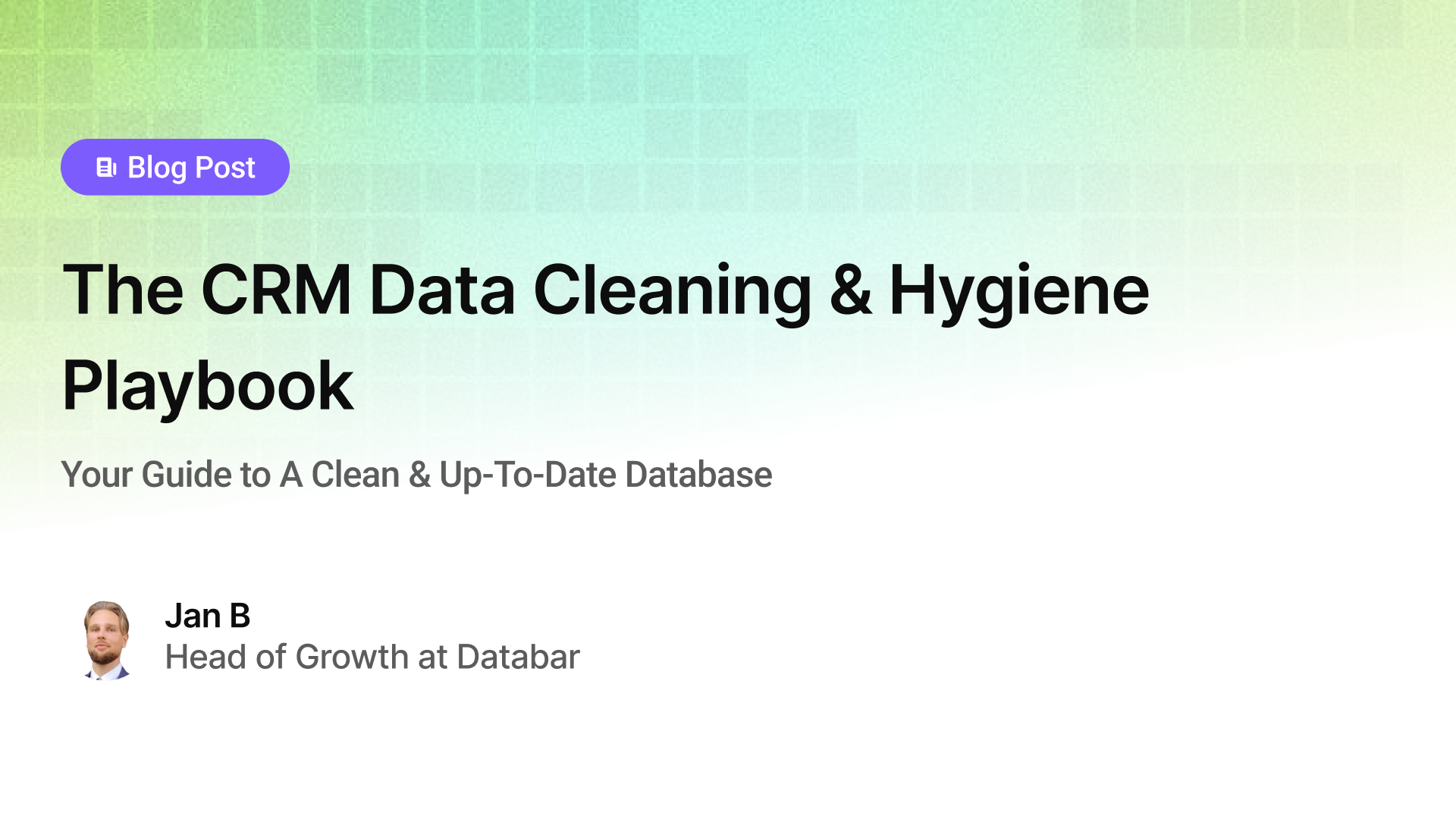
The CRM Data Cleaning & Hygiene Playbook
Your Guide to A Clean & Up-To-Date Database
by Jan, October 04, 2025
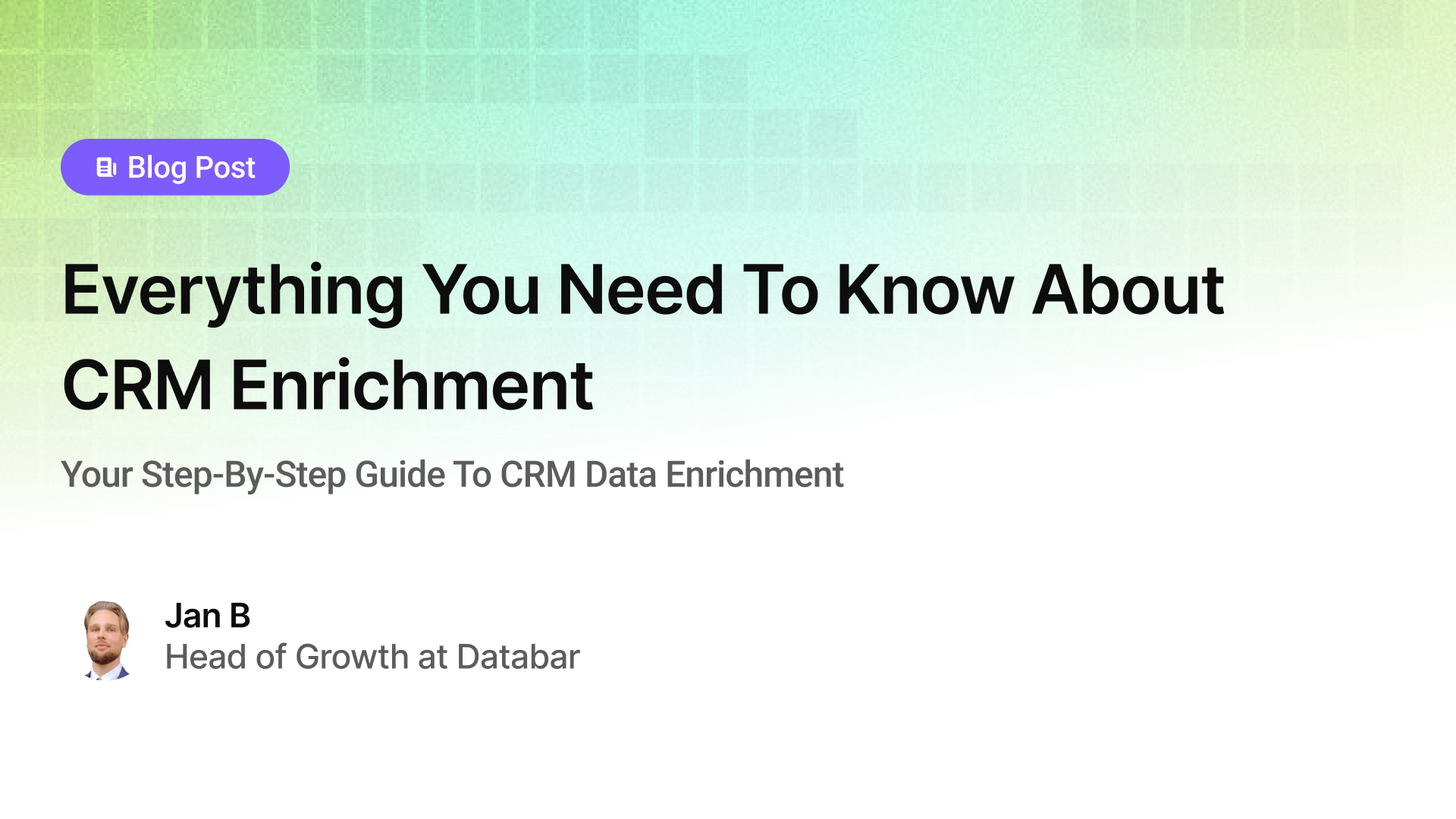
Everything You Need To Know About CRM Enrichment
Your Step-By-Step Guide To CRM Data Enrichment
by Jan, October 03, 2025
